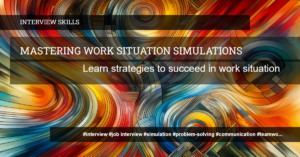Introduction:
Conflict is an inevitable part of any workplace. Whether it’s a disagreement between team members, conflicts can arise due to differences in opinions, goals, or communication styles. However, conflict doesn’t have to be destructive. In fact, it can be an opportunity for growth and positive change if handled appropriately.
- Understand the Root Cause:
To effectively handle conflict, it is important to understand the underlying reasons behind it. Often, conflicts stem from miscommunication or misunderstandings. Take the time to listen and understand the perspectives of all parties involved. By identifying the root cause, you can address the issue more effectively.
- Practice Active Listening:
Active listening is a crucial component of conflict resolution. It involves giving your undivided attention to the person speaking, maintaining eye contact, and asking clarifying questions. By actively listening, you demonstrate empathy and show the other person that their concerns are being heard and understood.
- Use “I” Statements:
When expressing your viewpoint during a conflict, it is essential to use “I” statements. This approach helps to convey your thoughts and feelings without blaming or attacking the other person. For example, instead of saying, “You never listen to me,” say, “I feel unheard when I share my ideas.”
- Collaborate and Seek Common Ground:
Instead of viewing conflict as a win-lose situation, strive for a collaborative approach where both parties work together to find a mutually beneficial solution. Focus on shared goals and interests to create a win-win outcome. By seeking common ground, you can foster teamwork and strengthen relationships.
- Keep Emotions in Check:
During conflict situations, emotions can run high. It is important to remain calm and composed. Avoid reacting impulsively or allowing emotions to escalate the conflict further. Take a deep breath, step back if necessary, and approach the situation with a rational and level-headed mindset.
- Explore Mediation:
In some cases, it may be helpful to involve a neutral third party to facilitate the resolution. Mediation can provide an unbiased perspective and help guide the conversation towards finding common ground. Consider involving a manager, HR representative, or a professional mediator if the conflict persists.
- Focus on Problem-Solving:
Conflict resolution should ultimately aim at finding a solution to the problem at hand. Instead of dwelling on past events or assigning blame, focus on brainstorming solutions and identifying practical steps to move forward. Encourage open dialogue and creative problem-solving techniques to reach a resolution.
Conclusion:
Handling conflict in the workplace is a skill that can be developed with practice and a willingness to learn. By understanding the underlying causes of conflict, practicing effective communication techniques, and maintaining a problem-solving mindset, you can navigate through conflicts and promote a harmonious work environment. Remember, conflict can be an opportunity for growth and improved teamwork when managed effectively.
For more information on conflict resolution techniques and strategies, visit our website: Interviewer Live – Conflict Resolution Techniques
Category Parent Level: Workplace Dynamics



